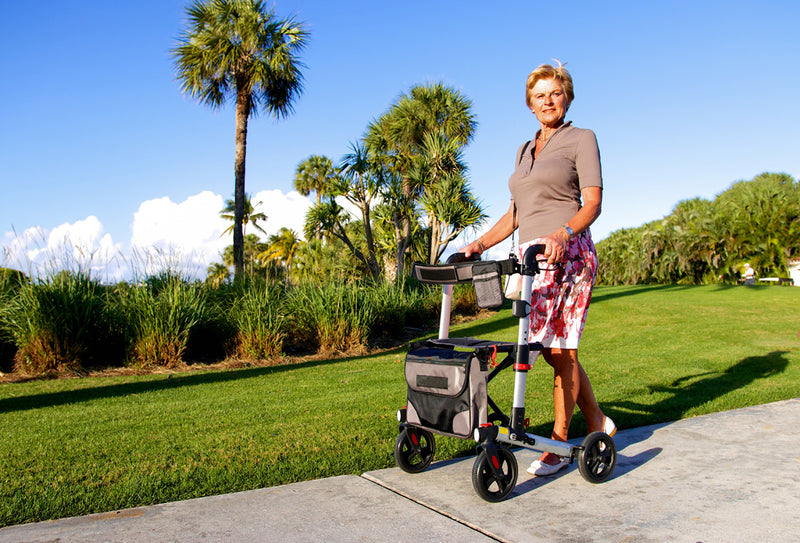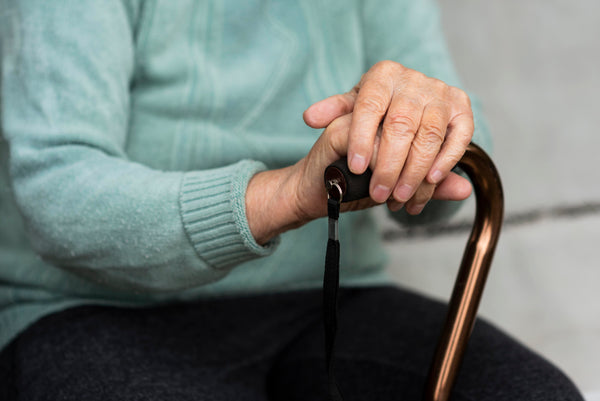Your Safety
Walking Aids for Seniors – Canes, Scooters & More

Maintaining mobility and independence is crucial for senior citizens to lead an active and fulfilling lifestyle. However, age-related factors such as decreased strength, balance issues, and joint problems can make walking challenging. Fortunately, there is a wide array of walking aids available to assist seniors in overcoming these challenges and regaining their mobility. In this comprehensive blog post, we will explore the range of walking aids specifically designed for senior citizens, discussing their features, benefits, and considerations. By understanding the options at hand, seniors can make informed choices to improve their mobility, safety, and overall quality of life.
1. Canes
Canes are one of the most common and straightforward walking aids available. They provide stability and support to individuals with mild balance issues or minor mobility limitations. Key features and benefits of canes include:
2. Walkers
Walkers are versatile walking aids that offer more significant stability and support compared to canes. They are suitable for seniors who require greater assistance or have more severe balance or mobility issues. Different types of walkers include:
3. Crutches
Crutches are walking aids that provide support for individuals with leg injuries or those recovering from surgeries. They come in two primary types:
4. Walking Frames
Walking frames, also known as Zimmer frames or walkers, provide substantial support for individuals with severe mobility issues. They consist of a metal frame with four legs and are designed to be used indoors. Some benefits of walking frames include:
5. Mobility Scooters
 Mobility scooters are electric-powered devices that provide comfortable and convenient mobility for seniors with more significant mobility challenges. Key features and benefits of mobility scooters include:
Mobility scooters are electric-powered devices that provide comfortable and convenient mobility for seniors with more significant mobility challenges. Key features and benefits of mobility scooters include:
Considerations for Choosing Walking Aids
When selecting a walking aid, consider the following factors:
Professional guidance: Seek advice from healthcare professionals, such as physical therapists or occupational therapists, who can provide assessments and recommend the most appropriate walking aid based on individual needs.
Walking aids play a vital role in helping senior citizens maintain their mobility, independence, and overall well-being. With the wide array of options available, seniors can choose the most suitable walking aid based on their specific needs and preferences. Whether it's a cane for mild support, a walker for increased stability, or a mobility scooter for enhanced mobility, these aids empower seniors to overcome mobility challenges and stay active. By considering the features, benefits, and professional advice, seniors can regain their confidence, improve their quality of life, and continue to enjoy the freedom of movement for years to come.
1. Canes
Canes are one of the most common and straightforward walking aids available. They provide stability and support to individuals with mild balance issues or minor mobility limitations. Key features and benefits of canes include:
- Improved balance: Canes help redistribute weight and provide stability while walking, reducing the risk of falls.
- Different handle options: Canes come in various handle styles, including standard handles, offset handles, and ergonomic grips, allowing seniors to choose the most comfortable option for their needs.
- Adjustable height: Most canes are height-adjustable to ensure proper fit and support.
2. Walkers
Walkers are versatile walking aids that offer more significant stability and support compared to canes. They are suitable for seniors who require greater assistance or have more severe balance or mobility issues. Different types of walkers include:
- Standard walkers: These walkers consist of a metal frame with four legs and provide excellent stability but require more effort to lift and move.
- Rollators: Rollators are walkers equipped with wheels and brakes, offering increased mobility and ease of use. They typically have a seat and a storage pouch for added convenience.
- Knee walkers: Knee walkers are designed for individuals with lower leg injuries or surgeries. They have a cushioned platform for resting the knee of the injured leg while propelling themselves forward with the other leg.
3. Crutches
Crutches are walking aids that provide support for individuals with leg injuries or those recovering from surgeries. They come in two primary types:
- Axillary crutches: These are the most common type of crutches, consisting of a metal or wooden frame that fits under the armpit. They provide support and weight-bearing assistance.
- Forearm crutches: Forearm crutches, also known as elbow crutches, have a cuff that wraps around the forearm and a grip handle. They offer increased stability and allow for more natural arm movement.
4. Walking Frames
Walking frames, also known as Zimmer frames or walkers, provide substantial support for individuals with severe mobility issues. They consist of a metal frame with four legs and are designed to be used indoors. Some benefits of walking frames include:
- Excellent stability: Walking frames provide a broad base of support, reducing the risk of falls and providing confidence to seniors while walking.
- Height adjustability: Most walking frames are height-adjustable to ensure proper alignment and support.
- Accessories and attachments: Walking frames often come with accessories such as wheels, brakes, and storage baskets for added convenience.
5. Mobility Scooters

- Increased independence: Mobility scooters enable seniors to travel longer distances independently and with ease.
- Customizable settings: Scooters often have adjustable speed settings, steering controls, and seating options to accommodate individual needs and preferences.
- Outdoor and indoor use: Some models are designed for both indoor and outdoor use, allowing seniors to navigate various terrains with confidence.
Considerations for Choosing Walking Aids
When selecting a walking aid, consider the following factors:
- Mobility requirements: Assess the level of support needed based on balance, strength, and mobility limitations.
- Comfort and fit: Ensure that the walking aid is comfortable to use and properly fits the user's height and weight.
- Maneuverability and portability: Consider the ease of maneuvering the aid through doorways, narrow spaces, and different terrains. Also, think about whether the aid can be folded or disassembled for transport or storage.
- Safety features: Look for safety features such as non-slip grips, stability mechanisms, and locking brakes to ensure the user's safety while walking.
Professional guidance: Seek advice from healthcare professionals, such as physical therapists or occupational therapists, who can provide assessments and recommend the most appropriate walking aid based on individual needs.
Walking aids play a vital role in helping senior citizens maintain their mobility, independence, and overall well-being. With the wide array of options available, seniors can choose the most suitable walking aid based on their specific needs and preferences. Whether it's a cane for mild support, a walker for increased stability, or a mobility scooter for enhanced mobility, these aids empower seniors to overcome mobility challenges and stay active. By considering the features, benefits, and professional advice, seniors can regain their confidence, improve their quality of life, and continue to enjoy the freedom of movement for years to come.









